- Home
- Ray Bradbury
The Lost Bradbury
The Lost Bradbury Read online
THE LOST BRADBURY:
FORGOTTEN TALES OF RAY BRADBURY
Published by
Wonder Publishing Group Books,
a division of Wonder Audiobooks LLC
Northville, MI 48167
Compilation ©2010 Wonder Publishing Group,
a division of Wonder Audiobooks LLC
ISBN: 978-1-61013-079-0
All rights reserved
CONTENTS
INTRODUCTION
HOLLERBOCHEN’S DILEMMA
THE PENDULUM
LUANA THE LIVING
THE CANDLE
THE DUCKER
LAZARUS COME FORTH
UNDERSEA GUARDIANS
DEFENSE MECH
FINAL VICTIM
TOMORROW AND TOMORROW
JONAH OF THE JOVE-RUN
HOLIDAY
I, MARS
THE ONE WHO WAITS
INTRODUCTION
In this collection of stories, we get a glimpse of early Ray Bradbury, a first look at the great writer he was to become. These 14 pieces shows his versatility and willingness to experiment with several genres, from horror and psychological suspense, to fantasy, and of course, science fiction.
Bradbury published his first stories when he was just 18. He started publishing his work—some were even self-published—in amateur fan magazines. “Hollerbochen’s Dilemma” and “Pendulum” were among those early pieces that were printed and promptly forgotten. At that time, he was writing horror and fantasy stories which he could not sell. He got his first break—his first professional sale—with a story that he had asked a more established writer to co-write with him. “Pendulum” was expanded by Bradbury and Henry Hasse and eventually published in a pulp magazine. Bradbury didn’t stop writing and publishing since then.
Most of these stories have been reprinted in rare British anthologies and other obscure collections. However, there are some which have not seen print since they were published. Among those which had never been reprinted nor included in any story collection were “Lazarus Come Forth,” “Jonah of the Jove-Run,” and “Final Victim,” all of which were set in space.
Included in this anthology as well are four Martian tales which had somehow missed being chronicled. “Defense Mech,” “Holiday,” “I, Mars,” and “The One Who Waits” are all set in Mars. All of these, with the exception of “Defense Mech,” have been anthologized, though never before included in any collection of Bradbury’s Martian stories. Even in these early works, Bradbury’s signature voice—the one which made The Martian Chronicles a classic—could clearly be heard.
HOLLERBOCHEN’S DILEMMA
This was Ray Bradbury’s first published story, coming out when he was just 18 years old in the January 1938 issue of the amateur fan magazine Imagination! It was later reprinted in Burroughsian (1957) and anthologized in the British anthology, Horrors Unseen (1974). In November of the same year (1938), Bradbury sold another story featuring the same character, “Hollerbochen Comes Back.”
* * * *
Hollerbochen faced a crisis. He could tell what would happen in the future. He could see when he would die—and it was very distressing, as you well may imagine. Every branch of his life lay before him. He knew he would die the next day. He saw himself being blown to bits by a tremendous explosion.
Hollerbochen had another marvelous feature about his person: He had the unique power to be able to stand still in time for a few minutes. But only for a pitifully short few minutes.
He faced death and was terribly afraid.
“The Day” dawned and Hollerbochen looked into the future with his magic mind. He wished he never had found the fateful power he possessed so strongly. He knew he could pursue thousands of paths into the future that day. But each one culminated in a horrible death for his person. Which one to choose was up to Hollerbochen entirely.
He left his apartment and walked toward the elevator that would take him down twelve stories to the hotel lobby. Somehow he had a premonition of impending doom. On the way he decided to stand still in time to see what would happen if he did so. The cables of the elevator broke a second later as a vision of Hollerbochen entered the car. It landed loudly on the hard cement stories below. Hollerbochen drew back aghast at what he had witnessed. He supposedly had viewed himself enter the vehicle and be killed by its crash! He pinched himself to see if he were alive. But he knew he was because he was standing still in time at the moment.
Shaken, he returned to his room and tried to think clearly.
He knew he dared not leave the hotel by the elevator—else be killed. So he left his room and started down the stairway.
On the third floor a man accosted the clairvoyant with a gun and demanded his money. Hollerbochen quickly stood still in time and as the revolver went off he was not affected by the bullet though he saw a phantom figure of himself fall dead on the carpet.
Hollerbochen retraced his steps very discouragedly. He didn’t want to die but it seemed inevitable. For the next hour he tried going out time after time but always as he would approach the elevator it would crash in exactly the same way. He wondered absentmindedly if the people in the plunging prison were getting tired of being killed so many times. So far they’d fallen fifteen within an hour. Also, every time he’d start down the stairs the same robber would appear and take a shot at him. It was becoming monotonous. He wished the robber would run out of imagination.
Hollerbochen wanted to save the lives of the people in the elevator. So he decided he never would leave the hotel at all. He had only two ways to exit and they both were blocked by death.
The passengers in the elevator “3” had had a most unpleasant experience. In a brief second they had felt they were falling. They felt themselves hit the floor many times. Then the machine ceased its crazy antics and stopped at the main floor. They walked out, wondering at their odd dream—for obviously it really couldn’t have happened.
Spike Malone stuck his gat in a fat man’s rib. Impulsively he fired when the victim refused to hand over his money. At that the man disappeared! This incredible action occurred many times. Finally it stopped and Spike murmured something about going to get a good strong drink as he fled the fantastic hold-up failure spot.
Hollerbochen stood still in time and waited. He had determined he’d stay in the hotel forever.
He wondered about the inexplicable explosion he’d seen in his foresights of the future, where recurrently he was blown skyward by an unknown force.
He suddenly realized he had been standing still in time for quite a while. His head was beginning to ache terribly. A queer noise was ringing in his ears. It grew in intensity by the second. His head felt fearfully large, his body Brobdingnagian.
The noise rose to a deafening crescendo. A dull rumbling preceded a loud explosion as Hollerbochen, hotel and city were blown into minute atoms.
A tremendous amount of energy had been generated by Hollerbochen’s standing stationary in time. He never realized this and he never would. When he stopped in time it in turn had flown around him for a short space. But he had waited too long and a giant spacewarp of stupendous force bad been straining for release. It had found that release, but in doing so taken Hollerbochen, the hotel, and the city, with it out into space.
Thus Hollerbochen had brought about his own death, the death he had predicted and seen but didn’t quite understand.
Hollerbochen had solved his own dilemma.
THE PENDULUM
There are actually two versions of this story. This one was written by Bradbury when he was just 19. When
he failed to sell it, he published it anonymously in his fan magazine Futuria Fantasia in the Fall of 1939. Bradbury later on managed to convince Henry Hasse, an established science fiction writer at that time, to help him rewrite the story. It ended up four times longer, although the title remained the same, Pendulum. They had a hard time finding a publisher, but it was eventually accepted in the November 1941 issue of Super Science Stories. He and Hasse went on to collaborate on other work.
* * * *
Up and down, back and forth, up and down. First the quick flight skyward, gradually slowing, reaching the pinnacle of the curve, poising a moment, then flashing earthward again, faster and faster at a nauseating speed, reaching the bottom and hurtling aloft on the opposite side. Up and down. Back and forth. Up and down.
How long it had continued this way Layeville didn’t know. It might have been millions of years he’d spent sitting here in the massive glass pendulum watching the world tip one way and another, up and down, dizzily before his eyes until they ached. Since first they had locked him in the pendulum’s round glass head and set it swinging it had never stopped or changed. Continuous, monotonous movements over and above the ground. So huge was this pendulum it shadowed one hundred feet or more with every majestic sweep of its gleaming shape, dangling from the metal intestines of the shining machine overhead. It took three or four seconds for it to traverse the one hundred feet one way, three or four seconds to come back.
The Prisoner of Time! That’s what they called him now! Fettered to the very machine he had planned and constructed. A pris-on-er—of——time! A—pris-on-er—of——time! With every swing of the pendulum it echoed in his thoughts.
Forever like this until he went insane. He tried to focus his eyes on the arching hotness of the earth as it swept past beneath him.
They had laughed at him a few days before. Or was it a week? A month? A year? He didn’t know. This ceaseless pitching had filled him with an aching confusion. They had laughed at him when he said, some time before all this, he could bridge time gaps and travel into futurity. He had designed a huge machine to warp spaces, invited thirty of the world’s most gifted scientists to help him finish his colossal attempt to scratch the future wall of time.
The hour of the accident spun back to him now through misted memory. The display of the time machine to the public. The exact moment when he stood on the platform with the thirty scientists and pulled the main switch! The scientists, all of them, blasted into ashes from wild electrical flames! Before the eyes of two million witnesses who had come to the laboratory or were tuned in by television at home! He had slain the world’s greatest scientists!
He recalled the moment of shocked horror that followed. Something radically wrong had happened to the machine. He, Layeville, the inventor of the machine, had staggered backward, his clothes flaming and eating up about him. No time for explanations. Then he had collapsed in the blackness of pain and numbing defeat.
Swept to a hasty trial, Layeville faced jeering throngs calling out for his death. “Destroy the Time Machine!” they cried. “And destroy this murderer with it!”
Murderer! And he had tried to help humanity. This was his reward.
One man had leaped onto the tribunal platform of the trial, crying, “No! Don’t destroy the machine! I have a better plan! A revenge for this—this man!” His finger pointed at Layeville where the inventor sat unshaven and haggard, his eyes failure-glazed. “We shall rebuild his machine, take his precious metals, and put up a monument to his slaughtering! We’ll put him on exhibition for life within his executioning device!” The crowd roared approval like thunder shaking the tribunal hall.
Then, pushing hands, days in prison, months. Finally, led forth into the hot sunshine, he was carried in a small rocket car to the center of the city. The shock of what he saw brought him back to reality. THEY had rebuilt his machine into a towering timepiece with a pendulum. He stumbled forward, urged on by thrusting hands, listening to the roar of thousands of voices damning him. Into the transparent pendulum head they pushed him and clamped it tight with weldings.
Then they set the pendulum swinging and stood back. Slowly, very slowly, it rocked back and forth, increasing in speed. Layeville pounded futilely at the glass, screaming. The faces became blurred, were only tearing pink blobs before him.
On and on like this—for how long?
He hadn’t minded it so much at first, that first night. He couldn’t sleep, but it was not uncomfortable. The lights of the city were comets with tails that pelted from right to left like foaming fireworks. But as the night wore on, he felt a gnawing in his stomach, that grew worse. He got very sick and vomited. The next day he couldn’t eat anything.
They never stopped the pendulum, not once. Instead of letting him eat quietly, they slid the food down the stem of the pendulum in a special tube, in little round parcels that plunked at his feet. The first time he attempted eating he was unsuccessful, it wouldn’t stay down. In desperation, he hammered against the cold glass with his fists until they bled, crying hoarsely, but he heard nothing but his own weak, fear-wracked words muffled in his ears.
After some time had elapsed he got so that he could eat, even sleep while traveling back and forth this way. They allowed him small glass loops on the floor and leather thongs with which he tied himself down at night and slept a soundless slumber without sliding.
People came to look at him. He accustomed his eyes to the swift flight and followed their curiosity-etched faces, first close by in the middle, then far away to the right, middle again, and to the left.
He saw the faces gaping, speaking soundless words, laughing and pointing at the prisoner of time traveling forever nowhere. But after awhile the town people vanished and it was only tourists who came and read the sign that said: THIS IS THE PRISONER OF TIME—JOHN LAYEVILLE—WHO KILLED THIRTY OF THE WORLD’S FINEST SCIENTISTS! The school children, on the electrical moving sidewalk, stopped to stare in childish awe. THE PRISONER OF TIME!
Often he thought of that title. God, but it was ironic, that he should invent a time machine and have it converted into a clock, and that he, in its pendulum, would mete out the years—traveling with time.
He couldn’t remember how long it had been. The days and nights ran together in his memory. His unshaven cheeks had developed a short beard and then ceased growing. How long a time? How long?
Once a day they sent down a tube after he ate and vacuumed up the cell, disposing of any wastes. Once in a great while they sent him a book, but that was all.
* * * *
The robots took care of him now. Evidently the humans thought it a waste of time to bother over their prisoner. The robots brought the food, cleaned the pendulum cell, oiled the machinery, worked tirelessly from dawn until the sun crimsoned westward. At this rate it could keep on for centuries.
But one day as Layeville stared at the city and its people in the blur of ascent and descent, he perceived a swarming darkness that expanded in the heavens. The city rocket ships that crossed the sky on pillars of scarlet flame darted helplessly, frightenedly for shelter. The people ran like water splashed on tiles, screaming soundlessly. Alien creatures fluttered down, great gelatinous masses of black that sucked out the life of all. They clustered thickly over everything, glistening momentarily upon the pendulum and its body above, over the whirling wheels and roaring bowels of the metal creature once a Time Machine. An hour later they dwindled away over the horizon and never came back. The city was dead.
Up and down, Layeville went on his journey to nowhere, in his prison, a strange smile etched his lips. In a week or more, he knew, he would be the only man alive on earth.
Elation flamed within him. This was his victory! Where the other men had planned the pendulum as a prison it had been an asylum against annihilation now!
Day after day the robots still came, worked, unabated by the visitation of the blac
k horde. They came every week, brought food, tinkered, checked, oiled, cleaned. Up and down, back and forth—THE PENDULUM!…a thousand years must have passed before the sky again showed life over the dead earth. A silvery bullet of space dropped from the clouds, steaming, and hovered over the dead city where now only a few solitary robots performed their tasks. In the gathering dusk the lights of the metropolis glimmered on. Other automations appeared on the rampways like spiders on twisting webs, scurrying about, checking, piling, working in their crisp mechanical manner.
And the creatures in the alien projectile found the time mechanism, the pendulum swinging up and down, back and forth, up and down. The robots still cared for it, oiled it, tinkering.
A thousand years this pendulum had swung. Made of glass the round disc at the bottom was, but now when food was lowered by the robots through the tube it lay untouched. Later, when the vacuum tube came down and cleaned out the cell it took that very food with it.
Back and forth—up and down.
The visitors saw something inside the pendulum. Pressed closely to the glass side of the cell was the face of a whitened skull—a skeleton visage that stared out over the city with empty sockets and an enigmatic smile wreathing its lipless teeth.
Back and forth—up and down.
The strangers from the void stopped the pendulum in its course, ceased its swinging and cracked open the glass cell, exposing the skeleton to view. And in the gleaming light of the stars, the skull face continued its weird grinning as if it knew that it had conquered something. Had conquered time.
The Prisoner of Time, Layeville, had indeed traveled along the centuries.
And the journey was at an end.
LUANA THE LIVING
“Luana the Living” was first published in 1940 in Polaris, a piece that editors identified as one of the few serious fantasies that Bradbury published before he came to discover his own writing style. It was later on included in the 1973 British anthology of Horrors in Hiding.

 Fahrenheit 451
Fahrenheit 451 Zen in the Art of Writing
Zen in the Art of Writing The Halloween Tree
The Halloween Tree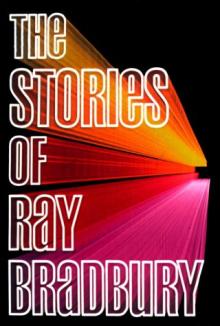 The Stories of Ray Bradbury
The Stories of Ray Bradbury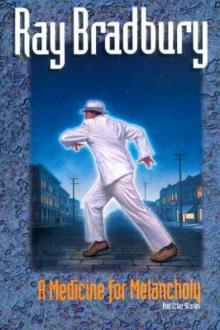 A Medicine for Melancholy and Other Stories
A Medicine for Melancholy and Other Stories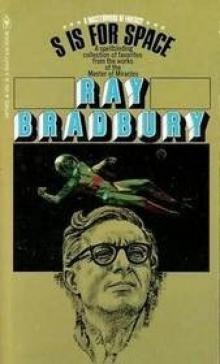 S Is for Space
S Is for Space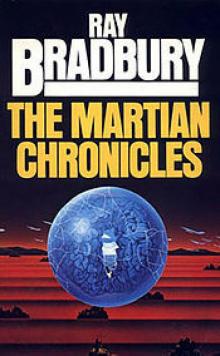 The Martian Chronicles
The Martian Chronicles Futuria Fantasia, Winter 1940
Futuria Fantasia, Winter 1940 Farewell Summer
Farewell Summer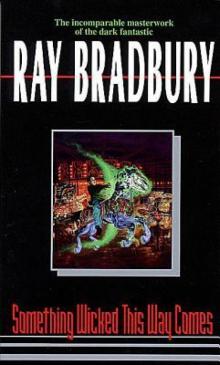 Something Wicked This Way Comes
Something Wicked This Way Comes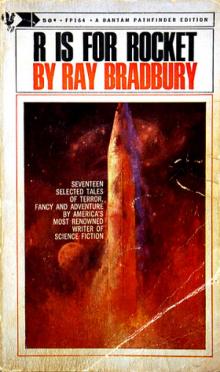 R Is for Rocket
R Is for Rocket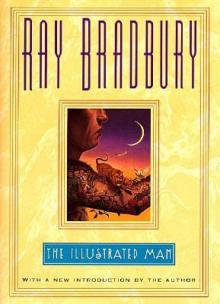 The Illustrated Man
The Illustrated Man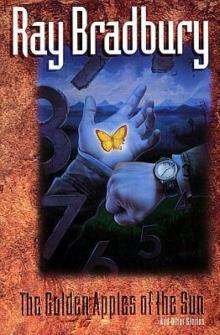 The Golden Apples of the Sun
The Golden Apples of the Sun Dandelion Wine
Dandelion Wine The Cat's Pajamas
The Cat's Pajamas A Graveyard for Lunatics
A Graveyard for Lunatics The Playground
The Playground We'll Always Have Paris: Stories
We'll Always Have Paris: Stories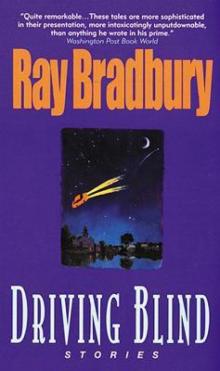 Driving Blind
Driving Blind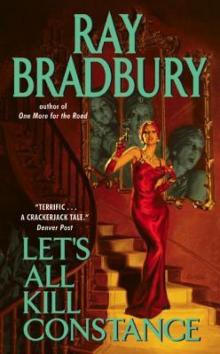 Let's All Kill Constance
Let's All Kill Constance The Day It Rained Forever
The Day It Rained Forever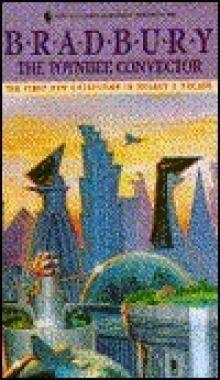 The Toynbee Convector
The Toynbee Convector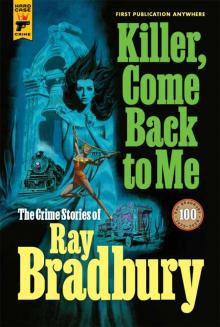 Killer, Come Back to Me
Killer, Come Back to Me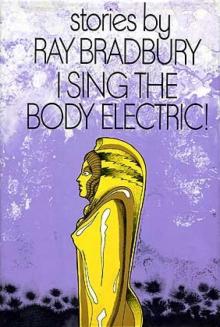 I Sing the Body Electric
I Sing the Body Electric A Little Journey
A Little Journey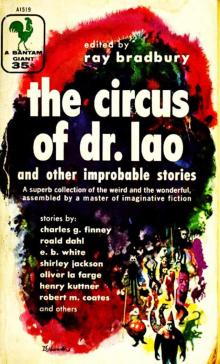 The Circus of Dr Lao and Other Improbable Stories
The Circus of Dr Lao and Other Improbable Stories Bradbury Stories: 100 of His Most Celebrated Tales
Bradbury Stories: 100 of His Most Celebrated Tales From the Dust Returned
From the Dust Returned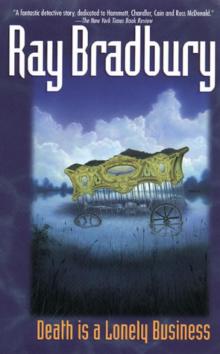 Death Is a Lonely Business
Death Is a Lonely Business THE VELDT
THE VELDT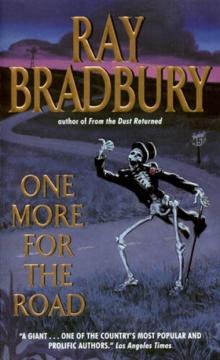 One More for the Road
One More for the Road Futuria Fantasia, Summer 1939
Futuria Fantasia, Summer 1939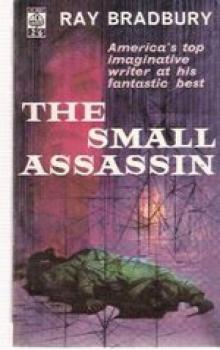 The Small Assassin
The Small Assassin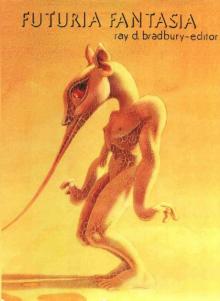 Futuria Fantasia, Fall 1939
Futuria Fantasia, Fall 1939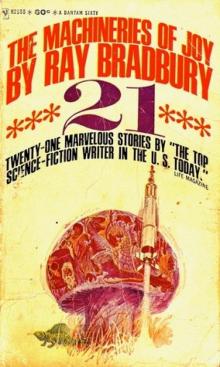 Machineries of Joy
Machineries of Joy The October Country
The October Country A Sound of Thunder and Other Stories
A Sound of Thunder and Other Stories Quicker Than the Eye
Quicker Than the Eye Summer Morning, Summer Night
Summer Morning, Summer Night Yestermorrow
Yestermorrow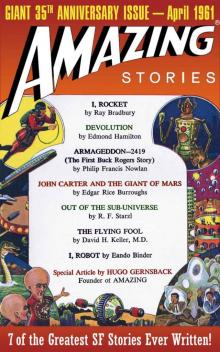 Amazing Stories: Giant 35th Anniversary Issue (Amazing Stories Classics)
Amazing Stories: Giant 35th Anniversary Issue (Amazing Stories Classics) (1972) The Halloween Tree
(1972) The Halloween Tree Listen to the Echoes
Listen to the Echoes A Pleasure to Burn
A Pleasure to Burn Bradbury Stories
Bradbury Stories Bradbury Speaks
Bradbury Speaks Ray Bradbury Stories Volume 2
Ray Bradbury Stories Volume 2 Farewell Summer gt-2
Farewell Summer gt-2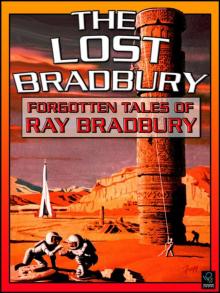 The Lost Bradbury
The Lost Bradbury Green Shadows, White Whale
Green Shadows, White Whale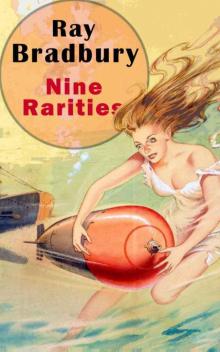 Nine Rarities
Nine Rarities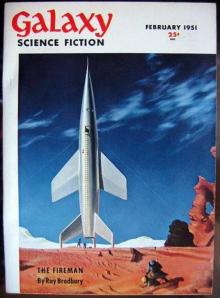 The Fireman
The Fireman Golden Aples of the Sun (golden aples of the sun)
Golden Aples of the Sun (golden aples of the sun) We'll Always Have Paris
We'll Always Have Paris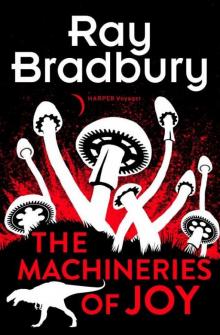 The Machineries of Joy
The Machineries of Joy A Graveyard for Lunatics cm-2
A Graveyard for Lunatics cm-2 The Sound of Thunder
The Sound of Thunder Where Robot Mice and Robot Men Run Round In Robot Towns
Where Robot Mice and Robot Men Run Round In Robot Towns